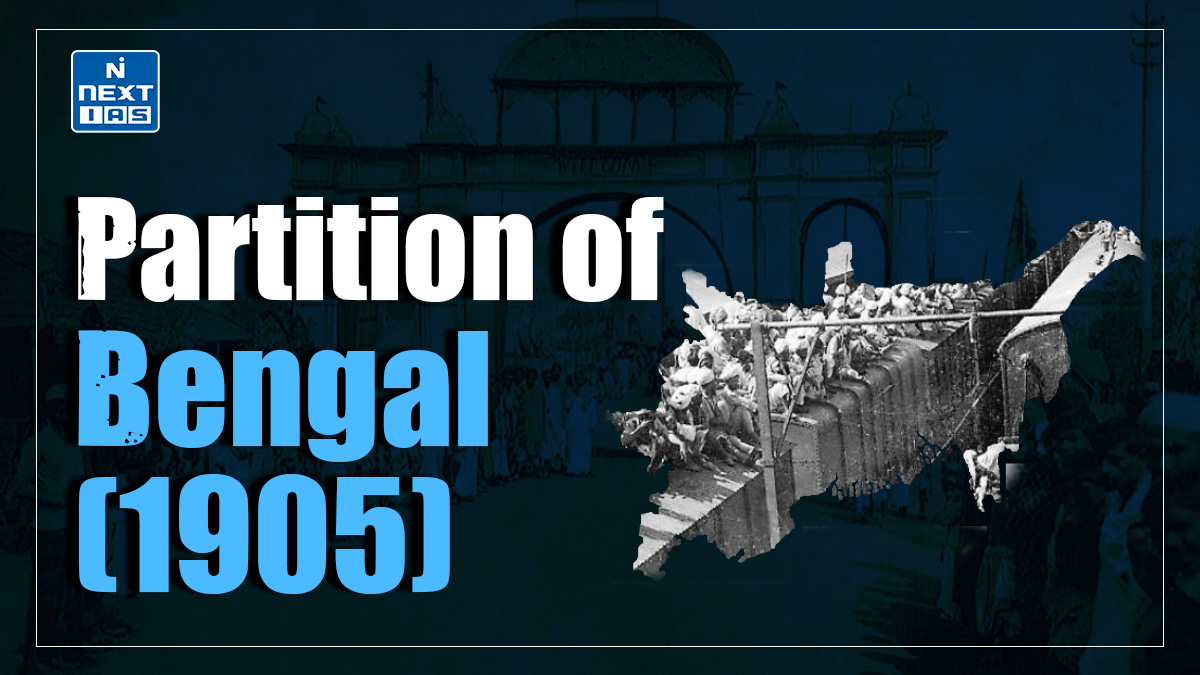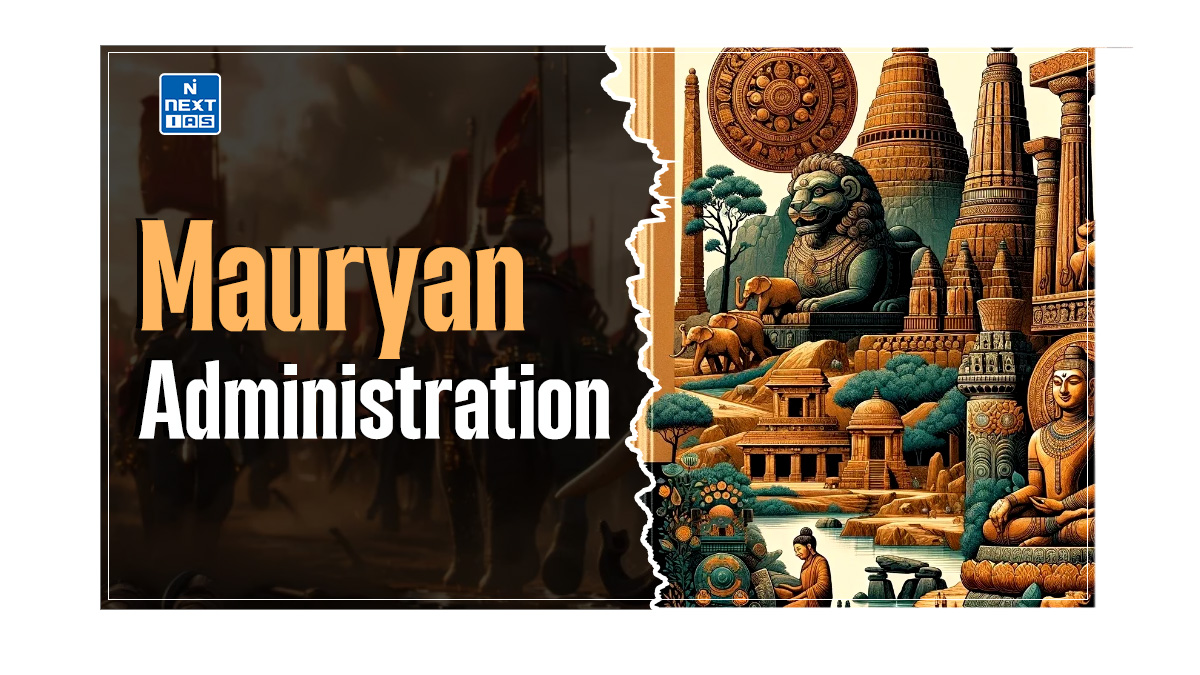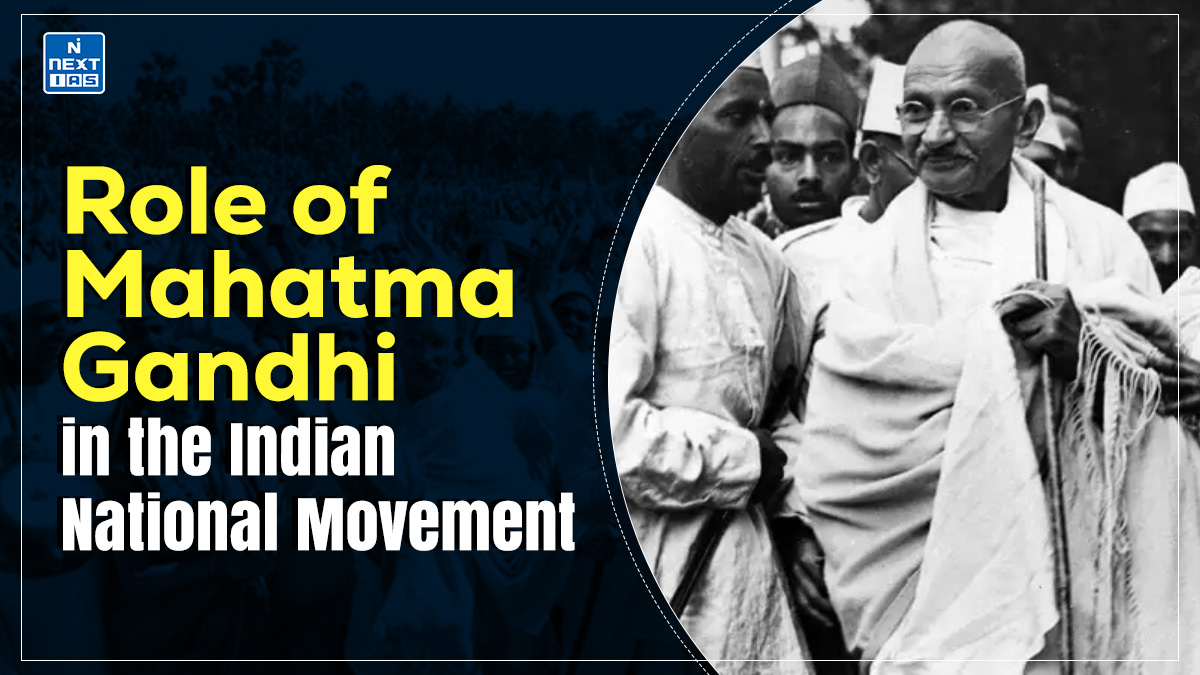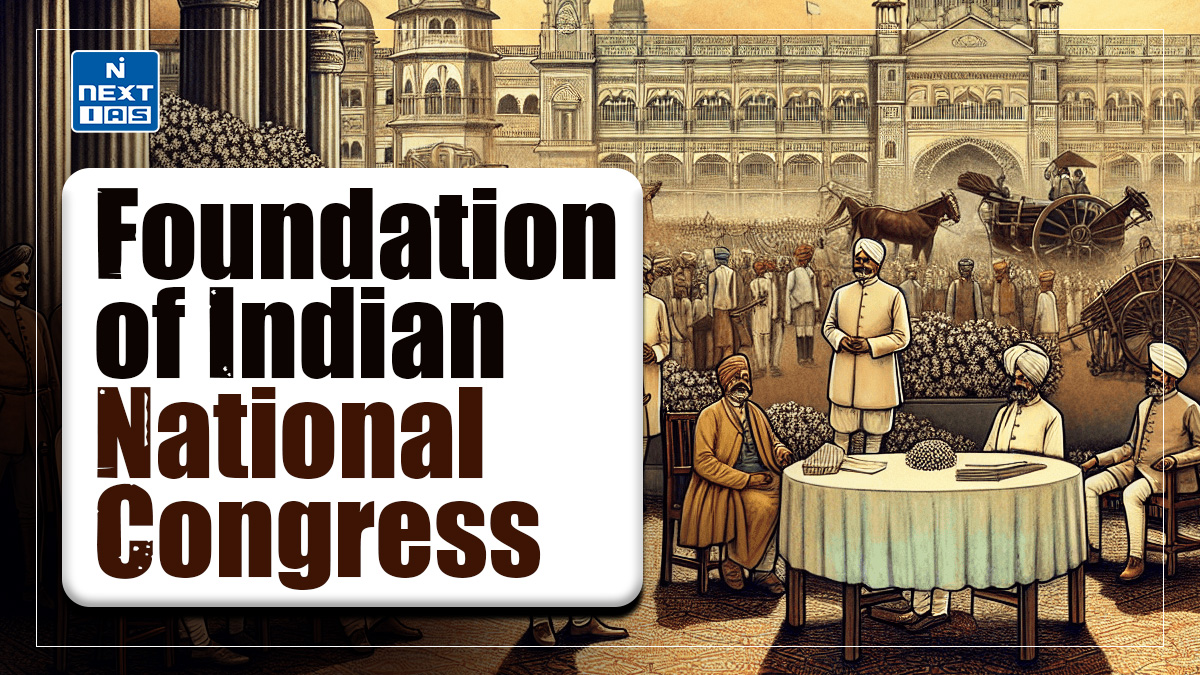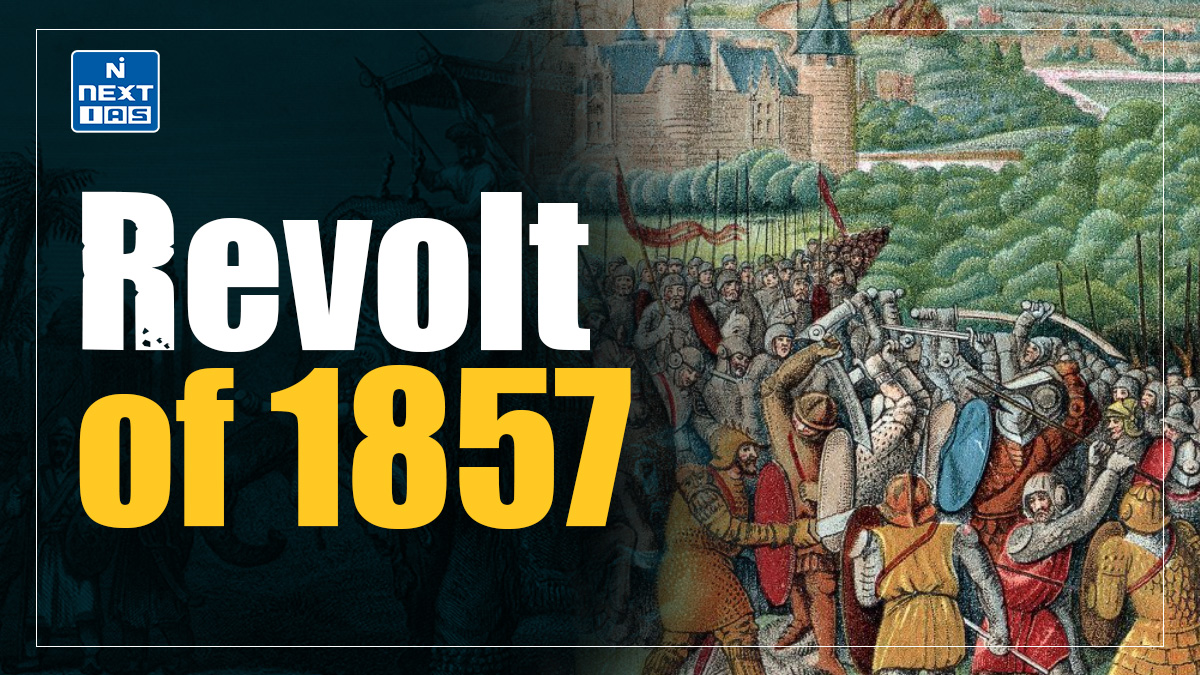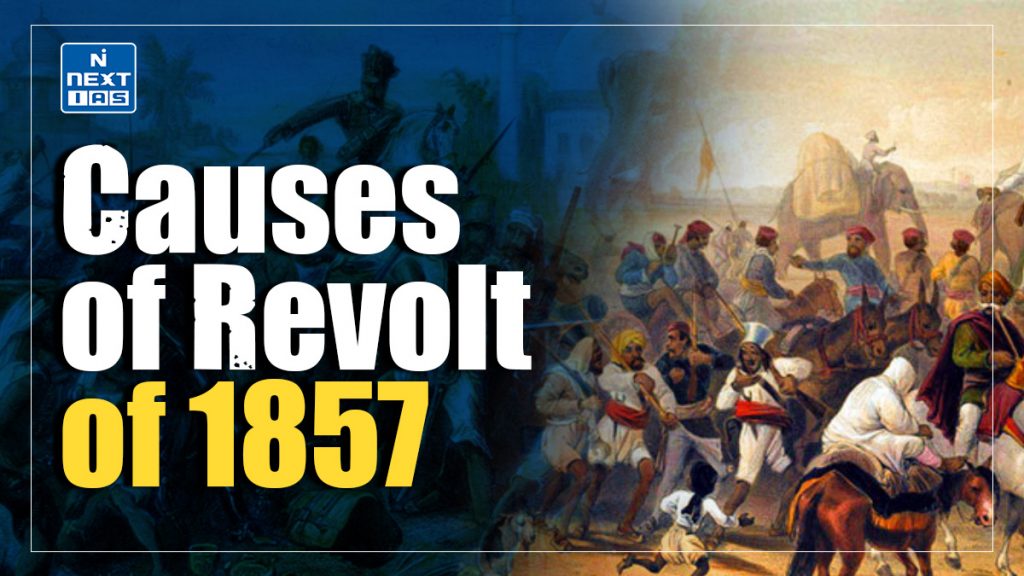
The Causes of Revolt of 1857 encompass a range of political, economic, social, and military grievances that collectively fueled discontent against British colonial rule in India. The significance of these causes lies in their demonstration of the widespread dissatisfaction among various sections of Indian society, which ultimately led to the first large-scale rebellion against British authority and marked a turning point in the struggle for independence. This article aims to study in detail the various factors that contributed to the revolt, including the immediate triggers and the underlying sentiments that fueled the uprising.
About Revolt of 1857
- The period between 1757 and 1857 saw some sporadic events of both traditional and progressive character, such as tribal revolts, peasant revolts, revolts by deposed rajas, uprisings and rebellions having religious character.
- About 100 years after the Battle of Plassey, a massive revolt occurred in some parts of north India.
- The revolt was more than a mere result of sepoy discontent; it was, in reality, a culmination of colonial rule’s character and policies.
Read our detailed article on the Revolt of 1857.
Causes of Revolt of 1857
- The Revolt of 1857, often considered the first war of Indian independence, was fueled by multiple political, economic, social, and military grievances against British rule.
- Politically, the aggressive annexation policies of the British, including the Doctrine of Lapse, led to the loss of sovereignty for many Indian rulers.
- Economically, high taxation and exploitation, facilitated by British economic policies, devastated traditional industries and led to widespread poverty among artisans and farmers.
- Socially, the British were seen as a threat to Indian religious practices and social norms, especially with reforms like the banning of Sati and the introduction of Western education.
- The immediate cause was the introduction of the Enfield rifle with cartridges rumoured to be greased with cow and pig fat, which deeply offended both Hindu and Muslim soldiers.
- These factors collectively ignited a rebellion across parts of northern and central India.
All the causes of Revolt of 1857 have been discussed in detail in the following section.
Economic Causes of Revolt of 1857
The Industrial Revolution forced England to look for raw materials and markets in other countries. This necessity guided the policy of the colonial rulers in India, whose economy was geared to serve the interests of the British masters.
- One of the important causes of popular discontent was the economic exploitation by the British and the complete destruction of traditional handicraft industry, which affected the peasants, artisans, and a large number of traditional Zamindar and chiefs.
- Colonial policies destroyed the self-sufficient structure of village economies. Commercial crops were encouraged in place of food crops to meet the raw material demand of British capitalists.
- Heavy taxation under new revenue settlements made by the East India Company in the newly annexed states without benefiting the peasantry, which groaned under the weight of heavy assessments and excessive duties.
- Permanent settlement was introduced in 1790s by Lord Cornwallis in Bengal, Bihar and Odisha; Ryotwari was introduced by Munro and Reed in Bombay and Madras in 1820; and Mahalwari settlement in Punjab, NWFP and Central province was highly exploitative.
- Even Zamindars lost much of their land due to non-payment of revenues arrears. Their private armies were disbanded by the British, and therefore, they could not assert their dominance over the estates.
- Moreover, there was no improvement in agricultural productivity as there was no investment in agriculture.
- Discriminatory tariff policy against Indian products was also one of the main causes of the discontent. Local industries were suppressed to make way for British manufactured goods,throwing the indigenous workers and artisans out of the job market.
- This increased the pressure on agriculture and land, which in turn resulted in the pauperization of the country in general.
- There was large-scale transfer of wealth from India to England, thereby draining India of its resources even as its population kept increasing, resulting in widespread poverty and misery.
Socio-Religious Causes of Revolt of 1857
- The activities of Christian missionaries created fear among the Indians that these missionaries would convert all of them to Christianity. The British Government passed the Religious Disabilities Act of 1850 (Lex Loci), which modified Hindu customs; this act allowed a converted Christian to inherit his ancestor’s land.
- In the social realm, there was increased insecurity among the masses as they perceived such reforms to be threatening their socio-religious structure and sentiments, for instance.
- Abolition of Sati (regulation XVII of 1829 by Lord William Bentinck and Raja Ram Mohan Roy); Legalizing of widow remarriage [Widow Remarriage Act, 1856 by Lord Dalhousie] and promotion of education among girls were considered as undue interference in the social customs of Indians.
- Religious sentiments were also hurt by the official policy of taxing lands belonging to the temples and mosques and to their priests or charitable institutions, which had been exempted from taxation by previous Indian rulers.
Political Causes of Revolt of 1857
- The East India Company’s policy of ‘effective control’ and gradual extinction of the Indian native states took a definite shape with the perfection of the Subsidiary Alliance system under Lord Wellesley.
- The British policy of annexation reached its peak under Dalhousie, who threw away all codes of morality and annexed various kingdoms, e.g. Satara (1848), Sambalpur (1849), Jaitpur (1849), Udaipur (1852), Jhansi (1853), Nagpur (1854) through Doctrine of Lapse i.e. the right of succession was given only to the rulers who had natural heir and not to the ones who had adopted son.
- The annexation of Awadh in 1856, on grounds of maladministration, was widely resented in India in general and in Awadh in particular.
- Dalhousie went too far and too fast. Responsibility for the rebellion of 1857-58 partly rests on the shoulders of Lord Dalhousie. The ‘Absentee Sovereigntyship’ (India was ruled by the British from England that was a distance of thousand miles) of the British rule in India was an equally important political factor influenced Indians against the British.
Administrative Causes of Revolt of 1857
- The administrative machinery of the East India Company was ‘inefficient and insufficient’.
- The Indian aristocracy was deprived of power and position. Under British rule, all high posts, civil and military, were reserved for the Europeans.
- In the military services, the highest post attainable by an Indian was that of Subedar on a salary of Rs. 60 or 70 and in civil services was that of Sadr Amin on a compensation of Rs. 500 per month. The chances of promotion were very few.
- There were high levels of corruption at the lower levels of administration. The police, judiciary, and other government officials were also corrupt. The complex judicial process enabled the rich to exploit the poor.
- The British remained ‘perpetual foreigners’ as there was no social link between the British and Indians. Further, the British looked down upon Indians with contempt and arrogance.
Military Causes of Revolt of 1857
- The extension of British dominion in India had adversely affected the service condition of the sepoys. The sepoys had already been facing discrimination in matters related to pay and pensions. They were required to serve in areas away from their homes without the payment of ‘bhatta’.
- From the 1820s and 1830s, the government moved towards giving the army a uniform culture and curtailed privileges. Dalhousie introduced the Post Office Act in 1854, which demanded ‘half anna’ from sepoys for sending even letters that earlier had been exempted.
- Another reason was having to serve in British forces abroad. The sepoys refused to serve in Burma as, according to them, it meant the loss of caste as they were not supposed to cross the sea.
- Lord Canning passed the General Service Enlistment Act, 1856, which forced the sepoys to give an undertaking that they would serve anywhere as was required by the government.
- In the orthodox Indian society of those days, strict caste rules were observed, which, at times, came in direct conflict with their service rules.
- For instance, the military authorities forbade the sepoys from wearing caste and sectarian marks, beards, or turbans. This further exaggerated the feeling of hatred among the Indians for the British.
Immediate Causes of Revolt of 1857
- The immediate cause for the revolt was the introduction of the Enfield rifle in the army.
- The cartridges of the rifle had to be bitten off before loading, and the grease was reportedly made up of beef and pork, a taboo for both the major religions in the country.
- The sepoys found this to be extremely violative of their religious sentiments, thus sparking resentment and revolt in the army.
Conclusion
The Revolt of 1857 was a culmination of multiple factors—political, economic, social, administrative, military, and immediate triggers—that exposed the deep discontent brewing in Indian society under British colonial rule. Although it was ultimately suppressed, the revolt remains significant as it awakened a sense of unity and resistance among Indians and set the stage for future movements in the struggle for independence. It also served as a crucial lesson for the British, leading them to make policy changes and adapt their approach to governance in India.
GS - 1